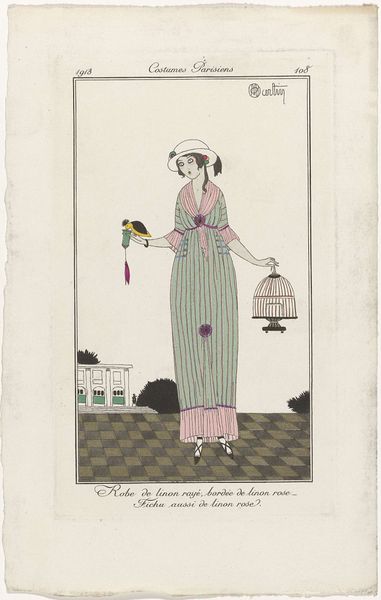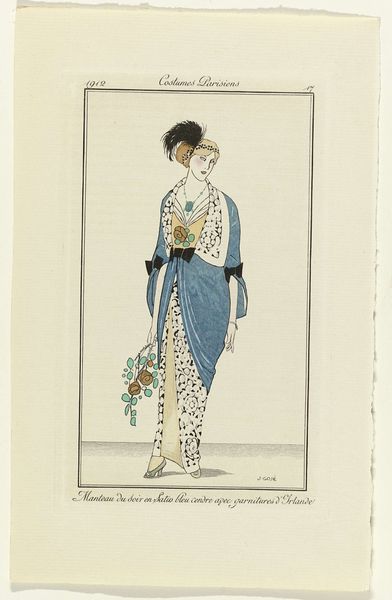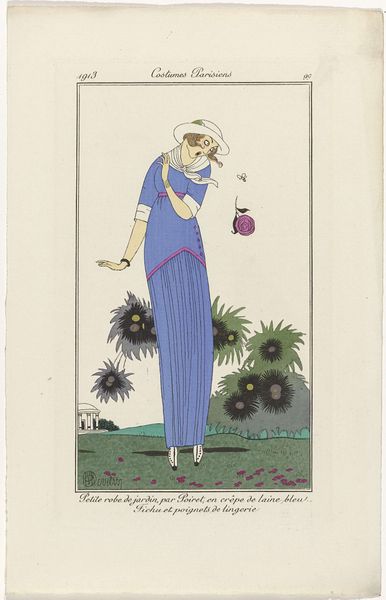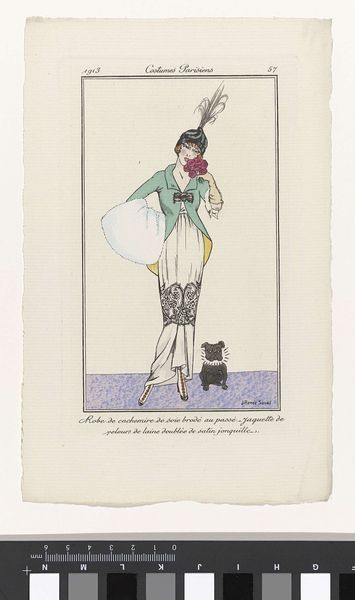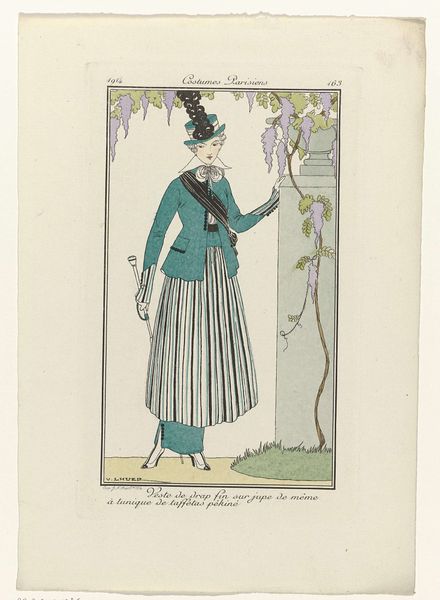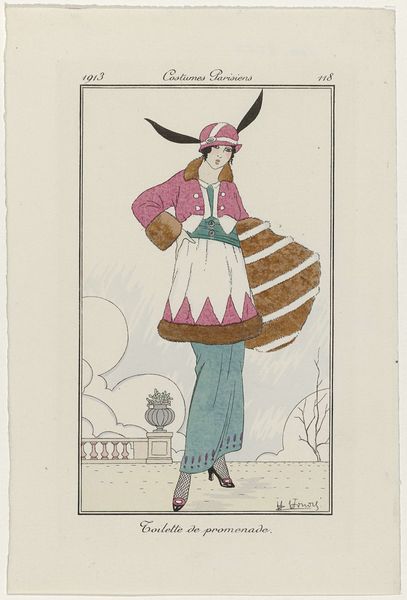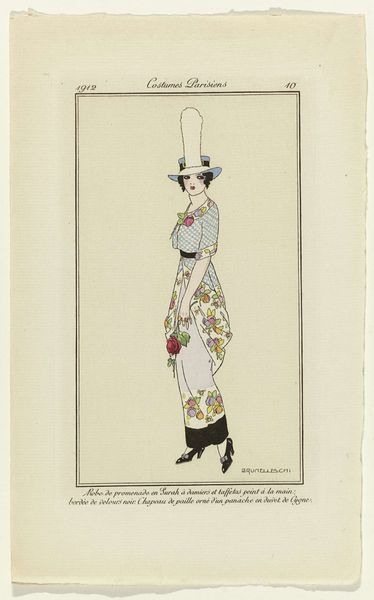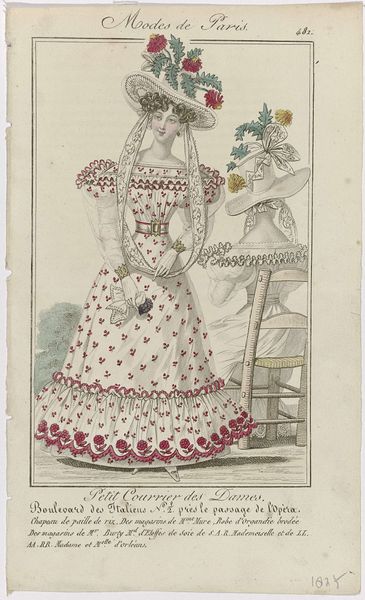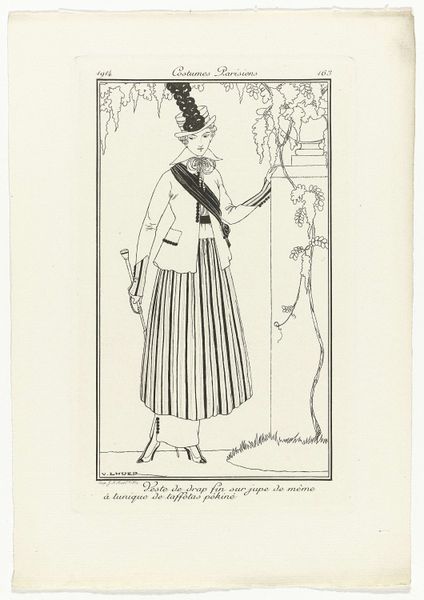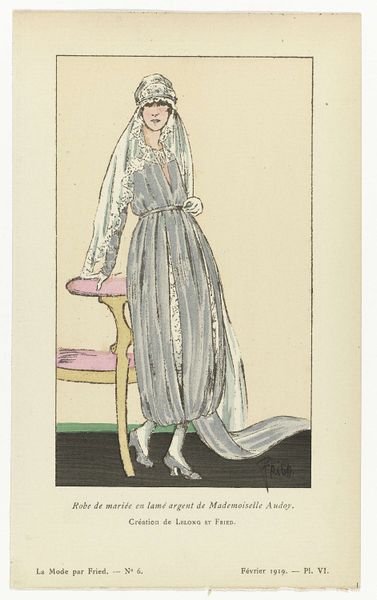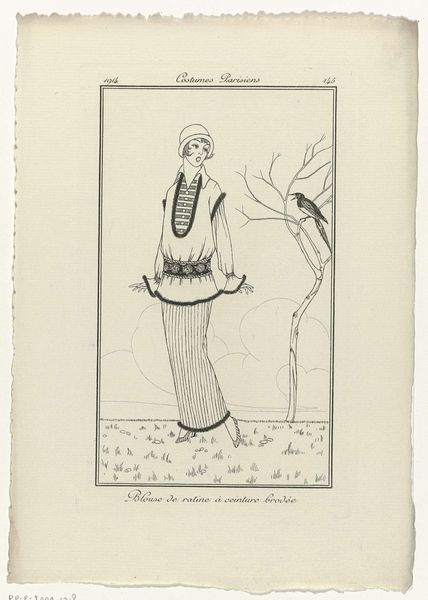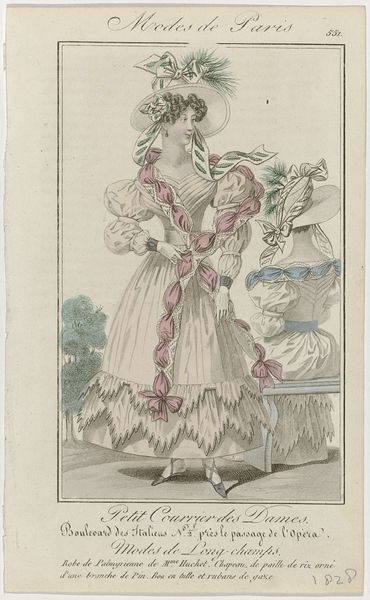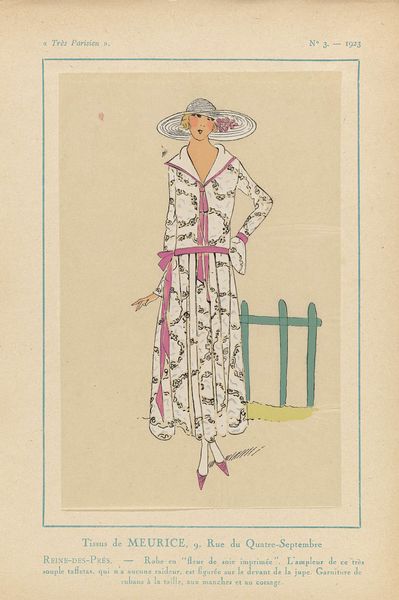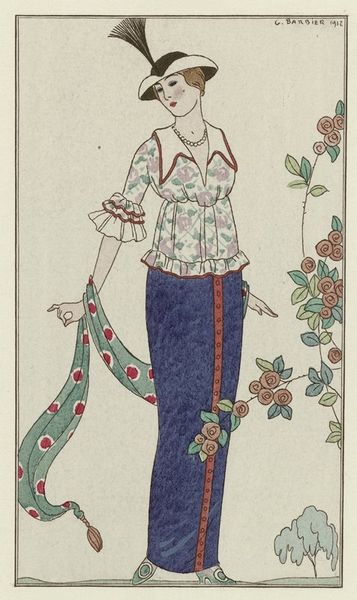
Journal des Dames et des Modes, Costumes Parisiens, 1912, no. 5: Robe en linon (...) 1912
0:00
0:00
charlesmartin
Rijksmuseum
drawing, paper, ink
#
portrait
#
drawing
#
art-nouveau
#
blue ink drawing
#
figuration
#
paper
#
ink
#
watercolour illustration
Dimensions: height 177 mm, width 107 mm
Copyright: Rijks Museum: Open Domain
This fashion plate was made by Charles Martin in 1912, using watercolor and perhaps a stencil. The image depicts a stylish woman in a linen dress, accessorized with English embroidery and pearls. What’s interesting here is how the material—linen—conveys social status. Linen production has always been labor-intensive, requiring the cultivation of flax, spinning the fibers into thread, weaving the cloth, and then bleaching it. This made linen desirable for clothing and household textiles. However, by the early 20th century, industrialization made cotton more affordable, but linen retained its cachet as a luxury fabric. This print is, therefore, not just a depiction of fashion but also an advertisement for a lifestyle, one of leisure and refinement. The image emphasizes the dress's delicate embroidery, pearls, and airy texture, alluding to the skill involved in its making. The image prompts us to consider the relationship between fashion, labor, and class in early 20th-century Paris.
Comments
No comments
Be the first to comment and join the conversation on the ultimate creative platform.
